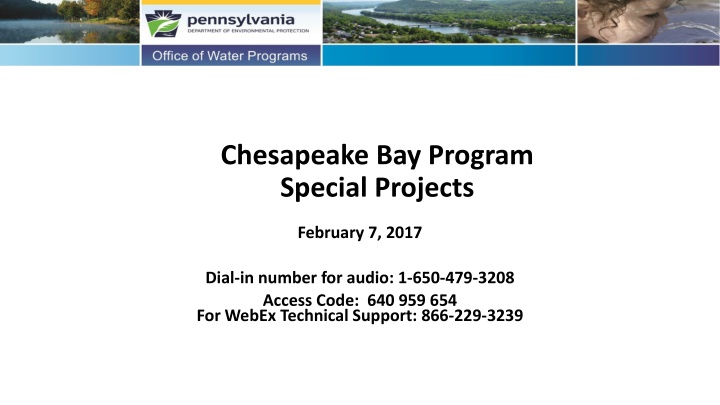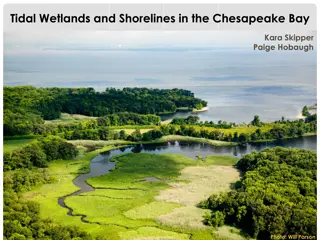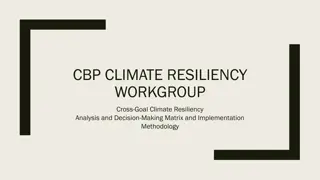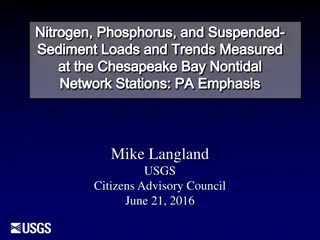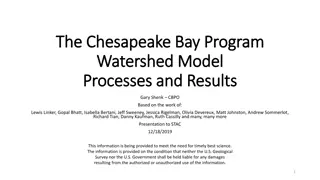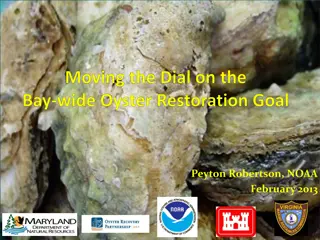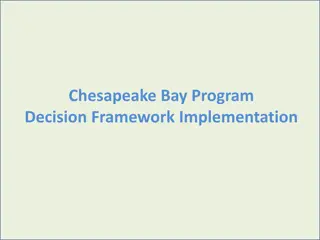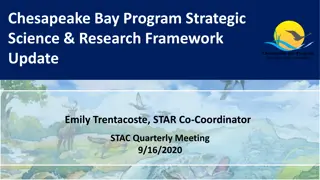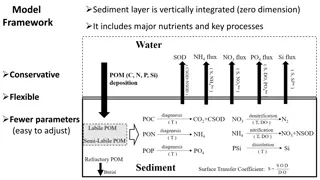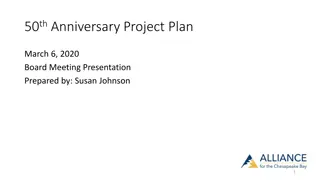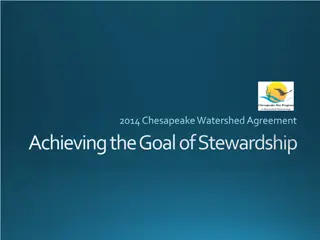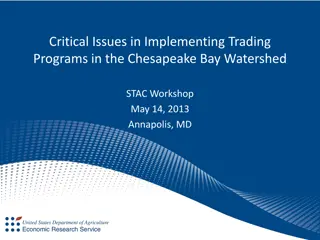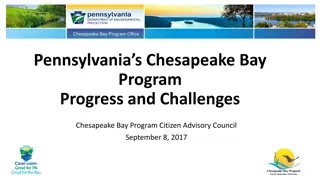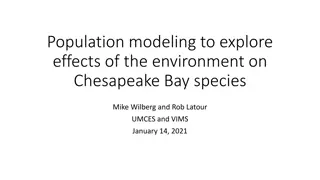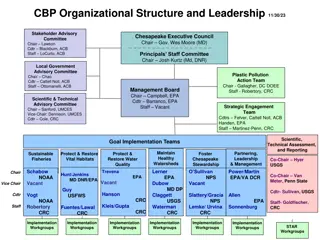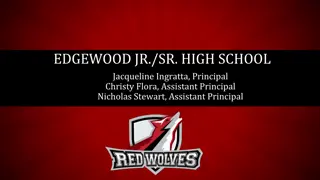Chesapeake Bay Program Special Projects Overview
Approximately $2.5 to $3 million in funding is available for two years for projects meeting Chesapeake Bay Restoration Strategy elements. Learn about funding priorities, successful application submission, and key deadlines. Focus on improving local water quality through BMP implementation and pollution reduction efforts.
Download Presentation

Please find below an Image/Link to download the presentation.
The content on the website is provided AS IS for your information and personal use only. It may not be sold, licensed, or shared on other websites without obtaining consent from the author.If you encounter any issues during the download, it is possible that the publisher has removed the file from their server.
You are allowed to download the files provided on this website for personal or commercial use, subject to the condition that they are used lawfully. All files are the property of their respective owners.
The content on the website is provided AS IS for your information and personal use only. It may not be sold, licensed, or shared on other websites without obtaining consent from the author.
E N D
Presentation Transcript
Chesapeake Bay Program Special Projects February 7, 2017 Dial-in number for audio: 1-650-479-3208 Access Code: 640 959 654 For WebEx Technical Support: 866-229-3239
Agenda Overview Announcement Funding Priorities Submitting a Successful Application Budgeting and Invoicing
Overview Approximately $2.5 to $3 million is available for two years Application deadline is February 28, 2017 Encourage Districts to work with DEP Regional Staff and Field Reps in development of project applications Project deadline is June 30, 2019 (no extensions)
Announcement Funding Priorities Clearly state how the project meets one or more elements in Chesapeake Bay Restoration Strategy Address pollution reduction deficiencies BMP implementation as a result of inspection strategy Focus on local water quality improvement and protection Locating and quantifying previously undocumented BMPs (follow CBP Verification Framework Guidance) High-impact, low-cost projects on the ground in impaired watersheds Includes: implementation of conservation tillage, no-till/high residue management; increased implementation of cover crop; livestock stream exclusion; barnyard runoff controls; riparian forest buffers Improve reporting, record keeping and data systems Collecting and reporting plan implementation (Manure Management, Ag E&S/Conservation Plans) Verification and reporting of non-cost shared BMPs
Submitting a Successful Application Review the Announcement Focus on one or more of the three Restoration Strategy goals identified in the announcement The more goals are included in a project, the higher it ranks Ex: Stream fencing on an operation that was previously inspected (or is located within the targeted inspection area) would meet Goal #1 and Goal #2 Focus on DEP defined impaired watersheds and/or county priority watersheds http://www.depgis.state.pa.us/Chesapeake_Bay/index.html Familiarize yourself with PA BMP Verification Program Plan http://files.dep.state.pa.us/Water/ChesapeakeBayOffice/PADEP%20BMP%20Verificatio n%20Program%20QAPP%20Addendum_FINAL.pdf
Submitting a Successful Application Focus on holistic, comprehensive implementation Ex: Implementing a suite of BMPs on one operation that will improve the operation, provide nutrient and sediment reductions, and will enable operation to be compliant with state regulations Waste storage, barnyard runoff controls, stream fencing/crossings, nutrient management Field practices such as terraces, diversions, grassed waterways Ex: Implementing livestock exclusion stream fencing on multiple neighboring operations along an ag impaired stream May be less than 35 feet from bank, but 35 feet or greater will be higher priority May or may not include forest buffers (with forest buffers will be higher priority) Ex: Focus on habitat along with water quality improvement Floodplain/stream restoration, wetland restoration, legacy sediment removal, riparian forest buffer
Submitting a Successful Application Present goals in terms of measurable outputs Budget section and in the narrative section Identify any partnering organizations/entities in application May or may not include additional funding Shovel-ready projects Willing landowner, design in-hand if possible Focus on cost-effective solutions Cost-effective based on nutrient and sediment reductions Ex: Increasing the implementation of no-till and cover crop in an impaired watershed Ex: Stream fencing multiple neighboring operations in an impaired watershed Ex: Tracking and reporting the implementation of Manure Management Plans
In Summary Deadline for Submittal is Close of Business February 28 to: Jill Whitcomb Chesapeake Bay Program Office Rachel Carson State Office Building P.O. Box 8555 Harrisburg, PA, 17105-8555 717-783-5205 jiwhitcomb@pa.gov 2 hard copies mailed, or 1 emailed Encourage Districts to work with DEP Regional Staff and Field Reps in development of project applications Available funding is $2.5 to $3 million (2 years funding) Projects MUST be completed by June 30, 2019.
Budget Categories Use Growing Greener Guidance, A Primer for Fitting Charges with Budget Categories Supplies Items Needed to Complete the Work, Dedicated to the Project Field Supplies, Specialized Safety Equipment Materials used to complete a project but transfer from site to site Equipment Permanent, Higher Cost Items Must be listed in Project Application/Scope of Work or Pre-Approved Administrative (max 5-10%) Office Supplies, Rent, Postage, Phone, Utilities Construction Competitive Bidding Process Equipment that is incorporated into the Project
Invoicing CBP-SP5 Landowner Name Amount of Practice Match Request for Reimbursement Signature of Technician/NRCS/Engineer and Landowner Regional Office Sign Off
Invoicing CBP - 23 Mark Cover Crops and No-till Acres Clearly --- Use Multiple as Landowner Name Use Bay/NRCS approved Practice Codes Do NOT put NRCS cost shared practices on these forms, only state or EPA funded Work with NRCS can be listed under other accomplishments without specific landowner names Make sure to SIGN the form
Invoicing CBP - 32 Invoicing CBP - 32 Need this with all CBP-23 and CBP-35 forms Separate 32 for Technician vs Engineer Make sure to SIGN the form Check your math NE and SC Regions -- Regional Office Sign Off NC Region Send to Harrisburg
To Make Things Easier Email Requests for Reimbursement to Stephanie Wilfong (swilfong@pa.gov) , copying the appropriate regional office Don t need to send in hard copies, do NOT send copies to Fred Fiscus Please use current version of the forms (2016) Using the DEP Standard Contract Agreement for ALL contracts
Contact Information: Veronica Kasi Program Manager vbkasi@pa.gov 717-772-4053 Jill Whitcomb Water Program Specialist jiwhitcomb@pa.gov 717-783-5205 Stephanie Wilfong Administrative Officer swilfong@pa.gov 717-772-5662 DEP Chesapeake Bay Website: http://www.dep.pa.gov/Business/Water/Pages/Chesapeake-Bay-Office.aspx
